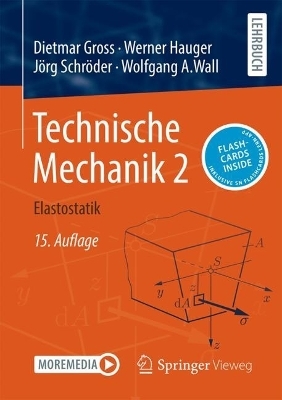
Applied Statistics
Springer-Verlag New York Inc.
978-1-4612-9755-0 (ISBN)
This outline of statistics as an aid in decision making will introduce a reader with limited mathematical background to the most important modern statistical methods. This is a revised and enlarged version, with major extensions and additions, of my "Angewandte Statistik" (5th ed.), which has proved useful for research workers and for consulting statisticians. Applied statistics is at the same time a collection of applicable statistical methods and the application of these methods to measured and/or counted observations. Abstract mathematical concepts and derivations are avoided. Special emphasis is placed on the basic principles of statistical formulation, and on the explanation of the conditions under which a certain formula or a certain test is valid. Preference is given to consideration of the analysis of small sized samples and of distribution-free methods. As a text and reference this book is written for non-mathematicians, in particular for technicians, engineers, executives, students, physicians as well as researchers in other disciplines. It gives any mathematician interested in the practical uses of statistics a general account of the subject. Practical application is the main theme; thus an essential part of the book consists in the 440 fully worked-out numerical examples, some of which are very simple; the 57 exercises with solutions; a number of different compu tational aids; and an extensive bibliography and a very detailed index. In particular, a collection of 232 mathematical and mathematical-statistical tables serves to enable and to simplify the computations.
to Statistics.- 0 Preliminaries.- 0.1 Mathematical Abbreviations.- 0.2 Arithmetical Operations.- 0.3 Computational Aids.- 0.4 Rounding Off.- 0.5 Computations with Inaccurate Numbers.- 1 Statistical Decision Techniques.- 1.1 What Is Statistics? Statistics and the Scientific Method.- 1.2 Elements of Computational Probability.- 1.3 The Path to the Normal Distribution.- 1.4 The Road to the Statistical Test.- 1.5 Three Important Families of Test Distributions.- 2 Statistical Methods in Medicine and Technology.- 2.1 Medical Statistics.- 2.2 Sequential Test Plans.- 2.3 Evaluation of Biologically Active Substances Based on Dosage-Dichotomous Effect Curves.- 2.4 Statistics in Engineering.- 2.5 Operations Research.- 3 The Comparison of Independent Data Samples.- 3.1 The Confidence Interval of the Mean and of the Median.- ?3.2 Comparison of an Empirical Mean with the Mean of a Normally Distributed Population.- ?3.3 Comparison of an Empirical Variance with Its Parameter.- 3.4 Confidence Interval for the Variance and for the Coefficient of Variation.- 3.5 Comparison of Two Empirically Determined Variances of Normally Distributed Populations.- ?3.6 Comparison of Two Empirical Means of Normally Distributed Populations.- 3.7 Quick Tests Which Assume Nearly Normally Distributed Data.- 3.8 The Problem of Outliers and Some Tables Useful in Setting Tolerance Limits.- 3.9 Distribution-Free Procedures for the Comparison of Independent Samples.- 4 Further Test Procedures.- 4.1 Reduction of Sampling Errors by Pairing Observations: Paired Samples.- 4.2 Observations Arranged in Pairs.- 4.3 The ?2 Goodness of Fit Test.- 4.4 The Kolmogoroff-Smirnoff Goodness of Fit Test.- 4.5 The Frequency of Events.- 4.6 The Evaluation of Fourfold Tables.- 4.7 Testing the Randomness of a Sequence ofDichotomous Data or of Measured Data.- 4.8 The S3 Sign Test of Cox and Stuart for Detection of a Monotone Trend.- 5 Measures of Association: Correlation and Regression.- 5.1 Preliminary Remarks and Survey.- 5.2 Hypotheses on Causation Must Come from Outside, Not from Statistics.- 5.3 Distribution-Free Measures of Association.- 5.4 Estimation Procedures.- 5.5 Test Procedures.- 5.6 Nonlinear Regression.- 5.7 Some Linearizing Transformations.- ?5.8 Partial and Multiple Correlations and Regressions.- 6 The Analysis of k x 2 and Other Two Way Tables.- 6.1 Comparison of Several Samples of Dichotomous Data and the Analysis of a k x 2 Two Way Table.- 6.2 The Analysis of r x c Contingency and Homogeneity Tables.- 7 Analysis of Variance Techniques.- ?7.1 Preliminary Discussion and Survey.- 7.2 Testing the Equality of Several Variances.- 7.3 One Way Analysis of Variance.- 7.4 Two Way and Three Way Analysis of Variance.- 7.5 Rapid Tests of Analysis of Variance.- 7.6 Rank Analysis of Variance for Several Correlated Samples.- ?7.7 Principles of Experimental Design.- Bibliography and General References.- Exercises.- Solutions to the Exercises.- Few Names and Some Page Numbers.
| Reihe/Serie | Springer Series in Statistics |
|---|---|
| Übersetzer | Zenon Reynarowych |
| Zusatzinfo | XXVIII, 707 p. |
| Verlagsort | New York, NY |
| Sprache | englisch |
| Maße | 155 x 235 mm |
| Themenwelt | Mathematik / Informatik ► Mathematik ► Angewandte Mathematik |
| Mathematik / Informatik ► Mathematik ► Statistik | |
| Mathematik / Informatik ► Mathematik ► Wahrscheinlichkeit / Kombinatorik | |
| ISBN-10 | 1-4612-9755-9 / 1461297559 |
| ISBN-13 | 978-1-4612-9755-0 / 9781461297550 |
| Zustand | Neuware |
| Informationen gemäß Produktsicherheitsverordnung (GPSR) | |
| Haben Sie eine Frage zum Produkt? |
aus dem Bereich


